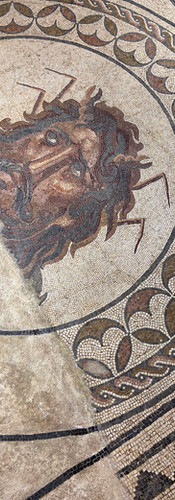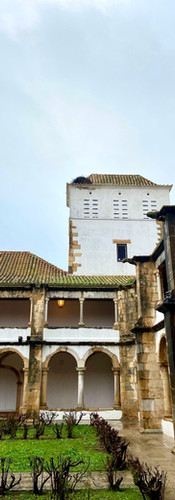Faro, Portugal
- meganckelena
- Jan 6, 2021
- 2 min read
Updated: Jan 14, 2021

The wind arose, pushing the mighty swell of the sea still larger, sailors rushing to prepare for the storm to come... Can you imagine the Moors sailing across the sea from Morocco to colonise what is currently Europe?

On first thought the Moors might to be so relevant anymore. But perhaps there is a lesson we can learn from the Moorish titular character of Shakespeare's Othello:
"If after every tempest come such calms,
May the winds blow till they have wakened death"
We can perceive Othello as reminding us that after a storm often comes a period of loving calm, enticing him even to urge the storm to blow even stronger. That seems quite relevant right now - Shakespeare's wisdom proves itself immortal once again.
The Moors ruled over Portugal for centuries. Dating back to the 4th century B.C., Faro was long the most important urban centre and commercial port in the Algarve, the southern region of Portugal.

Faro is one of the cities you should visit if you spend a few days in the Algarve; some of the Algarve's famous beaches can be found here, along with museums, historical monuments, and numerous restaurants.
After a stroll through the streets of Faro we had lunch at A do Pinto, where they offer Cataplana, the traditional Algarve stew with notable North African influences. The Cataplana takes its name from the cookware in which it's cooked, which is comprised of two large copper clamshells joined by a hinge. The fish, prawns, clams, peppers, tomatoes and onions are cooked in their own juices to give a distinctive mediterranean dish.
Highlight
My personal highlight of Faro: the Mosaico del Océanio (Mosaic of the Ocean). This exhibit in the Museu Municipal de Faro (Faro Municipal Museum) dates back to around the 3rd century, excavated in 1976. Next to it, you'll find a bust of the Roman emperor Hadrian.
The museum is integrated in a delightful Renaissance convent from the 16th century. (If you keep your eyes peeled you might spot a stork's nest perched up on the roof!) There are also a series of Arab home-instruments on permanent show, an ancient Roman remnants collection, Renaissance paintings, and a temporary modern photography exhibition (visited December 2020). In the Roman collection there is on object that particularly drew my interest (depicted below). It reminded me of the magical Sator square, the Latin palindromic square dating back to the ruins of Pompeii. There is something mesmerising about its ingenuous quadruple symmetry, due to each of the five words either being mesostic, telestich or acrostic. The fact that we don't understand what it really means, what it was for and where it comes from makes it all the more mystifying.
At sunset, take a glimpse of the shimmering sea through the archways built into the narrow streets.














Comments